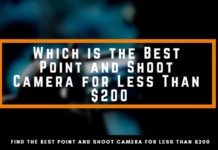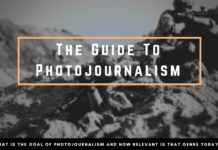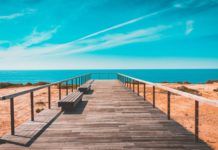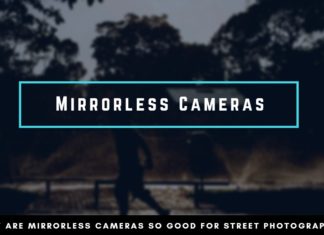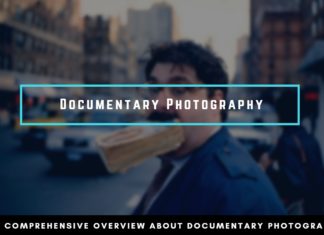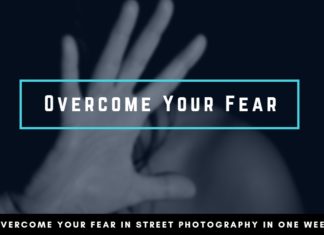Are You a photographer, a small Business or simply want to share Your images on Your small Blog?
Then You might have heard how “SEO” can improve Your Blog and how it might be seen by more people. But what does SEO stand for, what actions can You take and why is SEO so important for photographers?
In this article, I explain my point of view as a photographer and also how I handle the SEO side of things for my photography Blog.
Whether You just want to show a small portfolio or You plan on writing great content, You will benefit from SEO. Small changes and failures can make a huge difference and I want to share what I have learned about SEO in the last years and how it can benefit You as a photographer.
What is SEO
Seo simply stands for “Search Engine Optimization”.
When You think about which pages You visit during the day, You will probably pay most of Your visits to Google. You have a question that You want an answer for, You want to be up-to-date about a new camera or gain information about a topic?
You will ask Google and the search engine tries to find the page that will answer Your query the best.
The results that You see aren’t randomly thrown in. Google has a powerful algorithm at work, that determines which result is the most relevant for You and does rank the results accordingly.
This becomes important because more than 30% of the visitors will simply click the first result that Google does show. With the second and thirds already having a very small share of clicks, everything after the 3rd result becomes almost irrelevant.
I hope that will show You how important it is for You to show up at least in the top 3 for a certain query.
Rank in Search Results
1
2
3
4
5
Share of Visitors
33%
18%
11%
8%
6%
Search Engine Optimization describes the actions that are done to rank higher in the search engine results. Google isn’t a human and can be hard to understand the content and quality of a page. Although the algorithm is constantly improving and becoming more intelligent, the results are still based on a machine that determines which page will answer the query of the user the best.
As You write the content, You can already have the search engine results in mind. Some actions can make it easier for the search engine to understand what Your text is about.
For example in this article which is about SEO for photographers, I mention SEO pretty often and Google will also notice that all the sub-headings are revolving around this topic.
This makes it easier for Google to understand what this article is about. However, understanding the content is only one thing. Google know now what this article is about, but that doesn’t automatically mean that this article is ranking higher than others.
There are many people writing about this same topic, so how does Google determine which article is more suitable to answer Your question about SEO for photographers?
In the following, I want to explain which actions You can undertake, to rank higher than Your competition.
Keep in mind though, there is no “magic trick” although there are some gurus out there that promise something different.
In the end, it takes a lot of work, determination and time to outrank Your competition. There is no shortcut to that and I don’t want to make false promises.
Why SEO is important for Photographers

It doesn’t matter if You are a hobby photographer who just wants to show his portfolio, or if You are a professional photographer who runs a business.
Everyone can benefit from SEO. It does bring more people to Your visit and the amateur photographer is happy about gaining some exposure and the professional photographer can reach more clients.
In the end, the goal of a website or a blog is to attract visitors.
I was happy and very passionate to share my thoughts about photography in the beginning and this photography Blog was very lonesome for most of its existence. But seeing that more and more people are interested in the content that I write and are visiting my Blog is a very fulfilling feeling.
It does prove that my work isn’t completely in vain and that there are people out there that are interested in the content that I provide.
If You are a professional photographer, the final reason why SEO is so important for You is that it means money. The more people You can attract to Your business website, the more potential clients You are reaching and the more paid jobs You will have.
I like to compare websites to traditional stores.
Being ranked at page 10 of Google can be compared to having a store in a dark back alley in the worst neighborhood You can imagine. Nobody will ever set a foot in Your store.
However, if You are ranking in the first results, it will be like having Your store at the best location in Your town. And it is Christmas all-Year long.
Gaining more visitors doesn’t automatically mean that You have more sales. Of course, You need to convince the visitors to buy Your service and that You are the best photographer they can get. But this is another topic and falls more under the category of conversion, which can be a very complex subject as well.
Let’s just say that with great SEO, You can upgrade Your store from the worst location You can imagine, to the best place You can be. Your website will attract much more potential clients and in the end, that means that Your income will rise.
Even for the small hobby photographer, whose goal isn’t to earn money through a private blog, can opportunities arise that he might haven’t imagined before. Maybe companies want to cooperate with You, or Your photography might actually get recognizes by galleries or other art institutions. If You attract visitors, new opportunities will arise.
On-Page and Off-Page SEO
After that long talk and giving a basic overview, let’s start to dig a little bit deeper into the SEO for photographers.
Now I want to explain how the search engines determine the rank of their results.
The 100% accurate explanation can only come from Google itself and the algorithm is a very big secret, but they also release some information on how they rank pages and which factors are influencing the results.
On-Page SEO
I already mentioned that Google needs to understand what Your content is about. Otherwise, Google won’t be able to rank Your content for any query.
In old days, the Google algorithm was very simple and to rank the content the algorithm looked at “Keyword Density” the most. So if You would write about a photography topic, You would make sure to put the exact same keywords a lot of times in the article. Google would then clearly see what the article would be about. However, the article didn’t sound very natural anymore and very clearly “Seo-Optimized”.
Nowadays, Google is much more intelligent in determining what the article is about. Instead of spamming the keywords in the article, Google understands synonyms and the broader topic. From a writer’s perspective, there isn’t very much anymore You need to take care of when it comes to on-page SEO.
Just make sure to stay on the topic and write the article with the reader in mind. If You just write the article naturally, Google will be able to interpret the article and rank it for the right queries.
However, there are still some small adjustments that I would suggest You make on the page.
The article name and URL should come very close to the actual topic and as short as possible. I write this article with the keyword “SEO for Photographers” in mind and this is also what the URL will be like. It doesn’t make sense to name the URL something like “Rank Your Photography Business higher with Search Engine Optimization”. First, it becomes harder for Google to know what the text is about and personally, I visit URLs that are very simple structured more often.
The second thing that I would take of would be to have subheadings that contain the keyword and are very topical.
For Google, the Subheadings and Title are still a strong indicator to find out what the text is about. If I write about SEO for Photographers, it does make sense to also write about On-Page and Off-Page SEO. Those are very related topics and important for Google to know the content of the article.
Other than that, Google does become more and more intelligent and I would write the article with the readers in mind first.
Off-Page SEO
Now we are getting more technical and Off-Page SEO can be as complex as You want it to be.
As some background information, the Google algorithm was designed based on the system of research papers.
In research, papers are often cited and the ones that are being cited the most, are often seen as the most important paper. If You search for the “theory of relativity” it makes sense to find some of the basic papers and books about this topic and not a new paper that has absolutely no reputation.
That doesn’t necessarily mean that the original must be the most relevant for that search query. The original might not be that easy to understand and there are other papers that are based on the original and took the original thought further, which lead to them gaining even more popularity.
Websites are based on the same foundation. If You are searching for a specific photography topic, Google ranks those pages higher, that are getting cited by others a lot.
The “exposure triangle” for example is one of the basic concepts in photography that doesn’t change much and therefore old articles are still helpful. This means, that Google sees these articles, that have received a lot of citations very highly.

Here You can see, that those pages with the most “citations” or how it is called in SEO “Backlinks” are ranking fairly higher than the other pages.
Backlinks are still one of the most important ranking factors. This means, if You want to be recognized as a photographer, You need to acquire backlinks from other websites. Ideally, those websites should be in the photography area as well. This helps Google to categorize Your website better.
How can You acquire those backlinks?
Guest-Posting
Sharing Your Images
Writing great content
There are also other factors that are important in terms of Off-Page SEO. Social Media plays a big part in our life now. If You share Your article on Facebook and it gets shared a lot of times, then this is a strong signal for Google, that this article may be more important than others.
Basically, One-page SEO helps Google to understand the content of Your article, while the Off-Page SEO signals Google how important and suitable the article is.
RankBrain
I don’t want to leave You alone with the statement, that Off-Page Seo is one of the most important ranking factors.
Google has become more intelligent than simply counting the links that are pointing to a specific page. Instead, Google does value the user behavior very highly now.
In the past, You could rank highly by just acquiring the most links. As with most systems, there were some websites out there that tried to game the system by setting up “fake” websites and giving themselves links from them. This would make them rank very highly, but Google has caught on to them.
Off-Page SEO factors like backlinks are becoming less important with every update of their algorithm. Rather than having such simple ranking factors, Google tries to understand if a user is satisfied with the search results or not.
If I search for the “exposure triangle”, is the article that has the most backlinks really the best, or is it simply the oldest one and had more time to acquire the backlinks?
Google wants to satisfy the user by delivering the best content. Maybe there is a newer article out there that is way more in-depth and easier for the user to understand?
Then it is only in the interest of Google to show this higher quality article also higher in the search results.
Therefore, Google has a look at the user behavior. If users are leaving page A very quickly, it does indicate that they weren’t satisfied with the result and would rather search for a better alternative. If the users then stay longer on page B and even have a look at other articles on the very same website, it does indicate that they were much more satisfied with page B. In return, page B will surpass page A in the search results, even though page A may have the stronger Backlink profile.
What does that mean?
Simple, write higher quality articles than Your competition and have the user always in mind first.
How long does it take to show up

You read this article now and are super motivated to share Your knowledge and experiences with other people. After publishing 10 very long and in-depth articles, in Your first month, there are still no people showing up from Google and You are getting frustrated.
Are You doing something wrong or what is up?
The photography niche is very competitive. There are a lot of big and older websites out there, that are showing up high in the search results and won’t give You any space to rank Yourself.
For a good article, it can take up to 35 weeks to reach the final position in the search results. Before that, Google tries very hard where to put Your article and tries out different positions. This can mean, that one day Your article ranks very high and does attract a lot of visitors, but can be dropped to a lower position the next day. Google does this, to compare the user behavior and determine which rank Your article deserves.
Every action that You take to improve Your SEO takes weeks to months to actually have an effect on the search results. Therefore, I would always focus on writing great content first, instead of fiddling with minor changes on the article all the time.
In case that Your article really does stand out and attracts a lot of visitors and other websites are linking to it, Your article will move up quicker in the search results, but especially when You have a young website, it will take months, if not even a year to get some of Your articles to rank high in the search results.
Until then, You should focus on great content first.
What to expect realistically

Have You set-up a photography Blog and want to share Your knowledge or do You want to acquire more clients for Your Photography Business?
Then I admire You because You have just set Your foot in one of the most competitive areas on the Internet. There are so many people out there, that are publishing blog posts about photography and are publishing their portfolio, that You couldn’t have looked into anything more difficult.
If You are thinking that some of the SEO tips here will bring You thousands of visitors every day, then You will be in for a very hard time.
There are websites out there like Digital Photography School, that pretty much cover any topic on photography. If You are more interested in cameras and gear, then You have dpreview as a resource that covers pretty much area.
If You are thinking that by copying them, that You can be successful very quickly, then You are wrong. Keep in mind, that these are professional businesses that have lots of employers that write new articles and have years in advantage.
On the other hand, there are more specific areas where You can share Your knowledge. I have started with Street Photography topics and only recently have explored wider areas of photography as this does also resemble my personal development.
If You have a photography business, don’t try to dominate Google for broad terms, but rather be specific and cover exactly the area where Your expertise lies in.
This won’t bring You millions of visitors each month, but the few people that are coming to Your blog or website will be really interested in Your work.
Instead of just talking about photography in general, try to cover a more specific area where You are an expert in and over time, people will become interested in the content You are providing and Google will start to show Your articles higher.
This is not a process of days or weeks though. It takes months and years of dedication and hard work, to become recognized by Google, even if You follow all the right steps.
SEO for Photographers Tips
If You are still not scared by the fact that You are in one of the most competitive niches and that it will take a lot of work, I want to provide 10 actionable tips that You can do to improve the search friendliness of Your website.
The Title Tag
The title tag shows up at the top of the browser and also in the search results. It does help the visitor on Google, to understand what Your article is about. Keep the title tag rather short and clear. People need to see on an instant what Your article is about. Otherwise, they will go to the next website that has a much better title.
Subtitle Tags
Just like the title tag, the subtitles play also a relevant role for Google to understand the content. Try to mention Your keyword in the subtitles naturally. That will also help the user to scan Your article and navigate through it.
Meta Description
Do You Ask Yourself where the short text in the Google search results is pulled from?
This is the meta description and while it is not always easy to find, I would suggest using a plugin to edit the meta description in WordPress. Yoast is a good plugin when it comes to SEO, though it had some hiccups in the past and it fell out of favor for a lot of people. However, I still think that it is a great basic plugin to optimize the search friendliness of Your website.
Implement relevant Images
Images are a great way to loosen up a long text. An image tells more than a thousand words and instead of writing a long paragraph, why not implement a simple image?
Infographics are a great way to engage with Your readers. I know that they are very hard to design and I am no expert on it myself, but creating them can be very much worth Your time.
Use the alternate text of the image to mention Your keywords. The “alt text” is how Google sees the image and interprets its content.
Speed up Your Website
While Speed doesn’t have a direct influence on the SEO in the eyes of Google. Slow websites are affecting the user interaction very negatively. Or are You happy when You have to wait a couple of seconds every time You visit a page?
Try to keep Your website simple, reduce the size of the images and keep Your website fast. This will make the user experience way more pleasurable.
Link Your pages internally
Your website and pages shouldn’t be an isolated entity. By linking Your pages internally, You are showing Google more clearly which pages are relevant to each other. It does also help the user to navigate on Your website.
The Website Structure
With the latest updates, Google is very much focused on showing the pages, that are clearly written by the experts in some fields.
If You are creating a photography website. Stick to that topic and just create a few categories that are relevant to the main topic.
Use the Google Console
Google has some powerful tools that You can use legally to improve Your website. To speed up the process of ranking, You can submit Your pages in the Google Search Console. For a new Website, it is also helpful to submit a sitemap, which has been created by Your SEO plugin.
Write regularly
In theory, for Google, it doesn’t make a difference if You publish 10 articles a day and then stop, or if You are publishing one article a week. In reality, it does have much more benefits to publish regularly.
It does show that You are still working on the website and haven’t abandoned it yet. This is not only a positive indicator for the search engine, but also for the user, as he recognizes that the website is still active and the content relevant.
Publish great content and be patient
My final SEO advice for You is to publish the best content that You can provide and give Google the time to rank Your website highly.
Stay away from any services that promise You to rank high in Google quickly. While they may work for a short time, Google becomes much more clever and does recognize those “black-hat” techniques much more frequently.
If You want Your website to be successful, there is no way around providing great information and waiting until the hard work does pay off.



